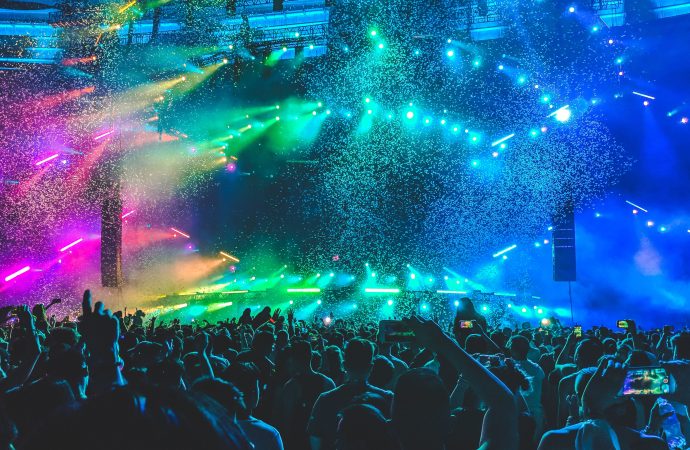In recent years, live music performances have become more than just a platform for musicians to showcase their musical prowess. The integration of visual effects into live shows has elevated the concert-going experience to a new level. Musicians across various genres have been using visual effects in their shows, creating unique and memorable experiences for
In recent years, live music performances have become more than just a platform for musicians to showcase their musical prowess. The integration of visual effects into live shows has elevated the concert-going experience to a new level.
Musicians across various genres have been using visual effects in their shows, creating unique and memorable experiences for their audiences. These effects include, but are not limited to, lighting, projections, and holograms.
One notable example is the late artist Prince, who was known for his spectacular live shows. His 2007 Super Bowl halftime performance featured intricate lighting effects that made the stage come alive. In addition, his “Welcome 2 America” tour in 2010 incorporated elaborate projections that added depth and dimension to his performances.
Another artist who has taken the live show experience to the next level is Travis Scott. His Astroworld tour featured a giant, mechanical bird that moved around the stage and a roller coaster that traveled through the arena, providing an immersive experience for concert-goers.
In the rock genre, Muse has also been known to incorporate stunning visual effects into their live shows. Their 2019 Simulation Theory tour featured giant screens and colorful lighting effects that transported the audience into a futuristic world.
Incorporating visual effects into live shows not only adds an extra layer of excitement but also allows artists to showcase their creativity and artistry. It is no longer enough for musicians to simply perform their music on stage. Fans expect a full sensory experience that engages them on multiple levels.
However, some critics argue that too much emphasis on the visual effects can detract from the music itself. It is important to strike a balance between the two elements so that the music remains the central focus of the performance.
Overall, the integration of visual effects into live music performances has become an increasingly popular trend that is here to stay. Musicians are pushing the boundaries and using technology to create unique and memorable experiences for their fans. The future of live music shows is looking bright, and fans can expect even more mind-blowing performances in the years to come.

















Leave a Comment
Your email address will not be published. Required fields are marked with *